Nicosia History Facts and Timeline
(Nicosia, Cyprus)
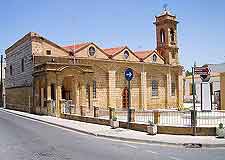
Visitors interested in the history of
Cyprus are typically not bowled over by the island's capital, Nicosia.
The city's history may stretch back to the Bronze Age, but it is somewhat chalk and cheese when compared to the cities of the south. Nicosia does, however, retain an Old Town, which is noted for its Venetian architecture, and has been the capital of Cyprus for a millennium.
Early Settlers and Occupiers
People were living in this area as long ago as 3000 BC. The Greeks named the original settlement Ledra, later changed by the Ptolemists to Lefkothea. It would, however, be referred to by the Greek title of Lefkosia until the Middle Ages, although the Venetians preferred Nicosia.
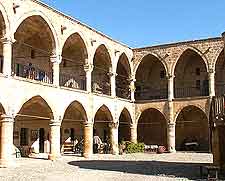
The city didn't become the capital of Cyprus until the 8th century AD, after coastal folks headed inland to avoid Arab raiders. Nicosia would come under various powers through the Middle Ages, including the Knights Templar, the Lusignans and the Venetians, as well as the Ottoman Turks, although it was the Knights and the Venetians that proved to have the greatest impact.
The Knights to a Turkish Look
The Knights built up Nicosia, while the Venetians did what they did best, building and strengthening defensive walls - and taxing everyone. However, after the Ottoman Turks routed the Venetians in the year of 1570, Nicosia, as with much of the rest of Cyprus, fell by the wayside. Residents continued to use the Greek name of Lefkosia, later shortening it to Lefkos.
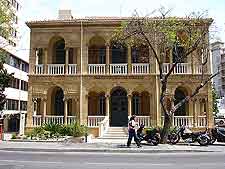
Owing to its earlier Christian-centric outlook, throughout its history Nicosia garnered many churches, later to be converted into mosques by the Turks. These included the Church of Agia Sofia (today the Selimiye Mosque), which was more than a century in the making, and St. Mary's Church (today the Omeriye Mosque). Both sport lofty minarets and appealing architecture worthy of a photograph or two.
The Venetians encased the Old Town with substantial city walls in the early 16th century and this area remains the most fascinating. The Old Town sits mostly in the southern Greek Cypriot part of Nicosia and contains several impressive museums and mansions, including the Dragoman Hadzigeorgakis and the Byzantine Museum. The most impressive part of the walls is the Famagusta Gate on the eastern side. This is a famous landmark today, being well preserved and leading tourists to the moat.
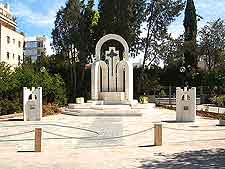
British Take Over
After the British took control of Cyprus in 1878, Nicosia flourished once again in history. It developed somewhat of a European air, complete with new churches, public schools, flash houses and modern roads. The city was extended beyond the Old Town and quickly became the heart of trade in Cyprus, centred on Ledra Street. One of the churches from around this time is the Panagia Phaneromeni Church (Faneromeni Church), the largest in the city. It garnered a bell tower in the 1930s.
Independence, Division and Today
British reign came to an end when Cyprus declared independence in 1959 / 1960. The famous 'Green Line' was drawn in 1964 after a skirmish between Greek and Turkish residents. Ten years later, Greek officers staged a coup, leading to the invasion of northern Cyprus by Turkey and armed security along the Green Line.
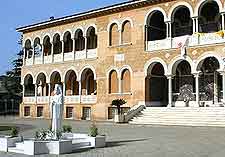
The Turkish ended up with the northern and eastern portion of the island, including the northern part of the divided Nicosia. Masses of Greeks moved south because of this, which saw coastal cities and resorts burst, while the Greek Cypriot government set up office in
Paphos.
Despite the rough history of Nicosia, things are quite harmonious today and tourists can freely cross the Green Line. While there's a lack of mind-blowing archaeological sites and pumping nightlife, there are many fine churches and museums - including the Cyprus Museum in the Old Quarter. The modern part of the city is certainly less of an attraction.
 Visitors interested in the history of Cyprus are typically not bowled over by the island's capital, Nicosia.
Visitors interested in the history of Cyprus are typically not bowled over by the island's capital, Nicosia. The city didn't become the capital of Cyprus until the 8th century AD, after coastal folks headed inland to avoid Arab raiders. Nicosia would come under various powers through the Middle Ages, including the Knights Templar, the Lusignans and the Venetians, as well as the Ottoman Turks, although it was the Knights and the Venetians that proved to have the greatest impact.
The city didn't become the capital of Cyprus until the 8th century AD, after coastal folks headed inland to avoid Arab raiders. Nicosia would come under various powers through the Middle Ages, including the Knights Templar, the Lusignans and the Venetians, as well as the Ottoman Turks, although it was the Knights and the Venetians that proved to have the greatest impact. Owing to its earlier Christian-centric outlook, throughout its history Nicosia garnered many churches, later to be converted into mosques by the Turks. These included the Church of Agia Sofia (today the Selimiye Mosque), which was more than a century in the making, and St. Mary's Church (today the Omeriye Mosque). Both sport lofty minarets and appealing architecture worthy of a photograph or two.
Owing to its earlier Christian-centric outlook, throughout its history Nicosia garnered many churches, later to be converted into mosques by the Turks. These included the Church of Agia Sofia (today the Selimiye Mosque), which was more than a century in the making, and St. Mary's Church (today the Omeriye Mosque). Both sport lofty minarets and appealing architecture worthy of a photograph or two.
 The Turkish ended up with the northern and eastern portion of the island, including the northern part of the divided Nicosia. Masses of Greeks moved south because of this, which saw coastal cities and resorts burst, while the Greek Cypriot government set up office in Paphos.
The Turkish ended up with the northern and eastern portion of the island, including the northern part of the divided Nicosia. Masses of Greeks moved south because of this, which saw coastal cities and resorts burst, while the Greek Cypriot government set up office in Paphos.